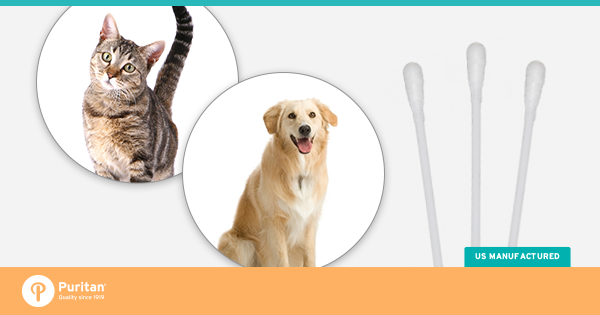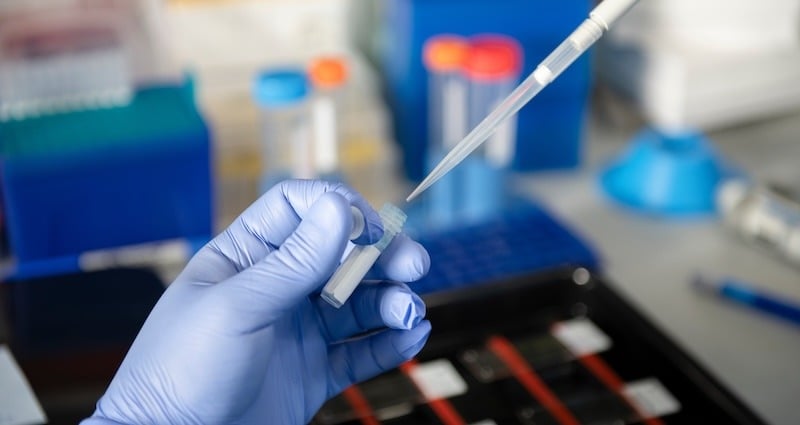 Most people understand that there are situations where human DNA needs to be collected and analyzed. DNA analysis can be used to place someone at a crime scene, to check for predisposition to diseases, or predict response to certain medications. But did you know the same can be done for pets?
Most people understand that there are situations where human DNA needs to be collected and analyzed. DNA analysis can be used to place someone at a crime scene, to check for predisposition to diseases, or predict response to certain medications. But did you know the same can be done for pets?
The world of DNA testing for pets has expanded since the first tests became available in 2007. Veterinary offices have been the main source for these tests but in more recent years websites such as DNA My Dog and Cat Ancestry have been gaining popularity.
From sending you the tools for collection to facilitating the analysis, these websites do it all, making the process more convenient and accessible than ever before.
So why should you get your furry friend's DNA analyzed? Wondering how hard is it to collect a DNA sample? and what happens to it once it hits the laboratory? We've got the tips you need!
Why Should You Collect a Pet's DNA?
One very simple reason pet owners (and shelter owners) may wish to examine the DNA of their animals is to discover what breed they are. In fact, DNA My Dog says, “After we receive your samples, they are processed and run through DNA My Dog’s extensive database of certified dog breeds. All DNA matches from the unique cheek cells of your dog are recorded and you get to discover the breeds found in your dog’s unique canine heritage.”
And the reason you might test your cat, according to the Cat Ancestry site is “If your cat truly is a direct relative of a breed, Cat Ancestry will detect that relationship with high probability.”
Once you know a cat or dog’s breed, you also can find out which diseases they might be predisposed to. For instance, if a dog is determined to be an Australian Shepherd, then he or she might be at a risk of heart disease. In addition, Australian Shepherds and other collie-type breeds often react adversely to certain drugs, according to yourpurebredpuppy.com. But, once you know a pet’s breed, you know to steer clear of certain medications.
Determining breed through DNA testing can also help to ensure animals are placed due to their personalities. Will they get along with children? How much do they like to exercise?
How Is DNA Collected?
Like humans, a pets DNA can be collected through a blood sample or a buccal (cheek) swab sample. Since a blood sample can't be as easily obtained at home, a buccal swab is the preferred method for the DNA test kits you order online. For dogs, cheek swabs can be collected at any age, even on nursing pups.
Once you order your DNA testing kit, the website will send you buccal swabs made from either spun polyester swab or a cytology brush, dependent on the amount of sample necessary for that particular test.
Before you swab your pet's cheek, make sure there is no food in its mouth. Gently, but firmly rub the swab inside your pet's cheek. Carefully insert the swab into the provided transport system. Your sample is now ready to send off to the lab for analysis.
What Happens in the Lab?
While different laboratories have varying procedures (as you know), we’ve chosen to highlight one for a dog and one for a cat. DNA My Dog says, they use Polymerase Chain Reaction testing (PCR).
“First we isolate pure DNA from the cheek swab by removing all the proteins and other things that can be found within a cell. The DNA is then placed into a thermocycler along with fluorescent primers for specific ‘loci’ or locations on the DNA, which enable the system to locate specific fragments of DNA. The thermocycler is set to cycle through a certain number of temperature cycles. Throughout the cycles, the primer finds specific areas within the DNA that are repeated and amplifies those areas.
"After the DNA has been amplified, it is in an ABI Prism Genetic Analyzer for capillary electrophoresis. In this process, the DNA loci are mapped and data on each is collected. This results in a comprehensive ‘profile’ of each individual. These individual profiles are then reviewed by a trained, experienced Ph.D.”
For felines, Cat Ancestry says, “The DNA from your cat is isolated from the buccal swabs that you provided. Your cat's DNA is then tested for ~170 DNA markers that have different DNA variants. The combination of the different variants produces a unique genetic profile for your cat. This genetic profile is then compared to a database of profiles from cats from around the world. Although your cat's profile is likely unique, it will share many DNA variants that are common to its population of origin. The population that has the most similar profile with your cat will be reported as its race of origin.”
How Puritan Can Help
Want to learn more about how to choose the right tools in the canine and other animal patients at your veterinary practice? Puritan has worked with many testing facilities to create custom kits and has a full range of products used widely in veterinary and animal genetic testing practices.
All of Puritan’s line of medical products are manufactured in the United States, adhere to strict quality control guidelines and are always customizable to customer specifications. Because of this, our customers can feel secure that their laboratories and clinics will never run out of necessary swabbing supplies.
Sources
Veterinary Genetics Laboratory, Cat Ancestry: https://www.vgl.ucdavis.edu/services/cat/ancestry/
DNA My Dog: http://dnamydog.com/
DDC Veterinary: https://vetdnacenter.com/dna-tests/canine-dna-testing/




